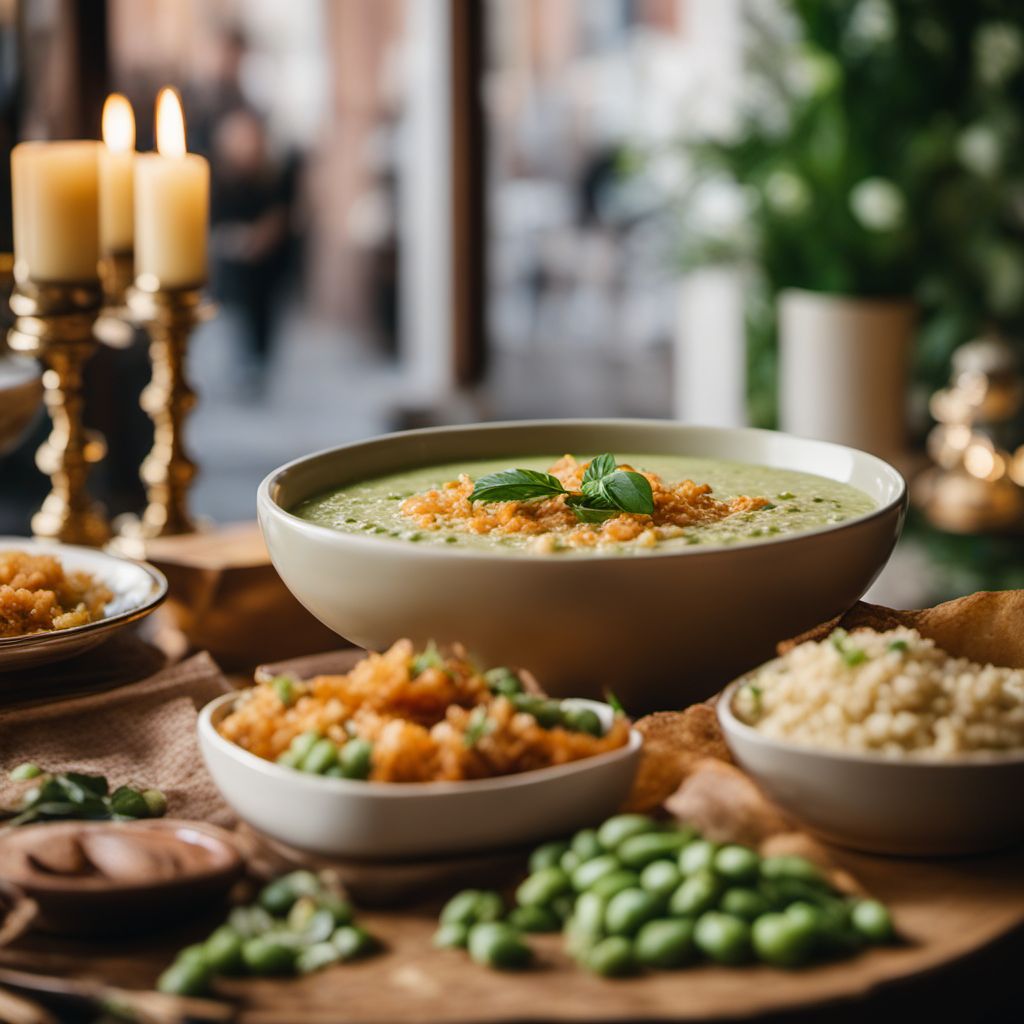
Dish
Risi e bisi
Risi e bisi is made with Arborio rice, chicken or vegetable broth, onions, butter, Parmesan cheese, and fresh peas. The dish is cooked slowly, adding broth one ladle at a time until the rice is cooked to perfection. The result is a creamy and flavorful soup that is perfect on its own or as a side dish.
Origins and history
Risi e bisi originated in Venice, Italy in the 16th century. It was traditionally served during the spring when fresh peas were in season. The dish was created as a way to use up leftover rice and peas. The dish became so popular that it is now a staple in Italian cuisine.
Dietary considerations
Gluten-free, can be made vegetarian or vegan by using vegetable broth and omitting the Parmesan cheese.
Variations
Variations of Risi e bisi include adding different types of cheese such as Gorgonzola or Fontina, or adding different types of vegetables such as mushrooms or asparagus.
Presentation and garnishing
Serve in a shallow bowl and garnish with a sprinkle of Parmesan cheese and a few fresh peas.
Tips & Tricks
Stir the risotto constantly to prevent it from sticking to the bottom of the pan.
Side-dishes
Risi e bisi can be served as a main dish or as a side dish. It pairs well with grilled meats or seafood.
Drink pairings
Pair with a dry white wine such as Pinot Grigio or Sauvignon Blanc.
Delicious Risi e bisi recipes
More dishes from this category... Browse all »

Aji nigiri sushi
Japanese cuisine

Akami nigiri sushi
Japanese cuisine

Anago nigiri sushi
Japanese cuisine

Arroz a la plancha
Spanish cuisine

Arroz a la tumbada
Mexican cuisine

Arroz al forn
Spanish cuisine
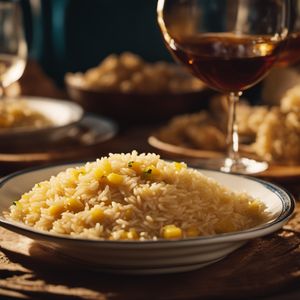
Arroz al jerez
Spanish cuisine
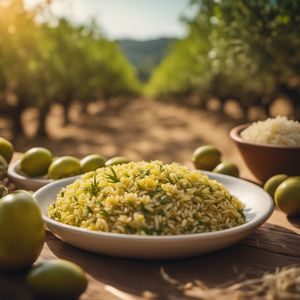
Arroz al olivar
Spanish cuisine
More cuisines from this region... Browse all »

Abruzzese and Molisan cuisine
Savory, Earthy, Rustic, Hearty
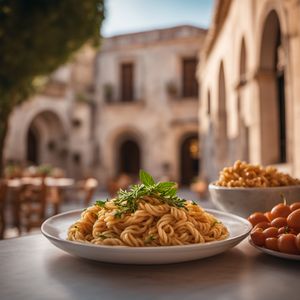
Apulian cuisine
Fresh, Savory, Rustic, Simple

Arbëreshë cuisine
Savory, Tangy, Herbaceous, Spicy

Basilicatan (Lucanian) cuisine
Savory, Earthy, Rustic, Hearty
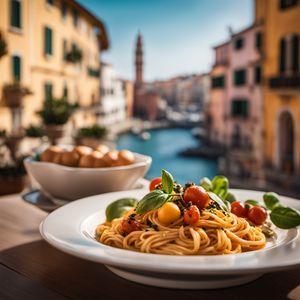
Ligurian cuisine
Light, Delicate, Herbaceous, Salty

Lombard cuisine
Rich, Savory, Meaty, Cheesy

Neapolitan cuisine
Bold, Savory, Spicy, Tangy, Fresh

Roman cuisine
Fresh, Light, Herbaceous, Tangy, Savory

